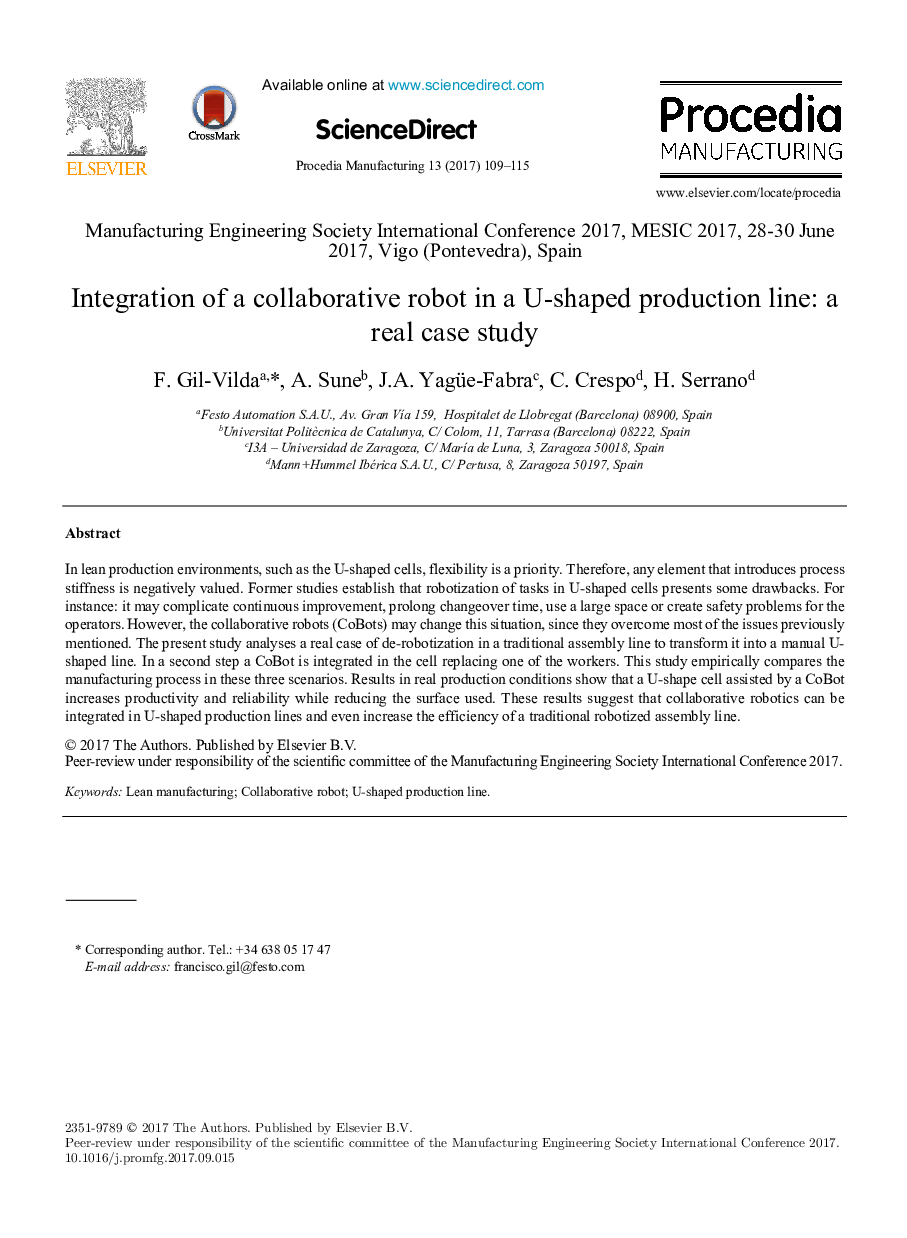| Article ID | Journal | Published Year | Pages | File Type |
|---|---|---|---|---|
| 5128517 | Procedia Manufacturing | 2017 | 7 Pages |
In lean production environments, such as the U-shaped cells, flexibility is a priority. Therefore, any element that introduces process stiffness is negatively valued. Former studies establish that robotization of tasks in U-shaped cells presents some drawbacks. For instance: it may complicate continuous improvement, prolong changeover time, use a large space or create safety problems for the operators. However, the collaborative robots (CoBots) may change this situation, since they overcome most of the issues previously mentioned. The present study analyses a real case of de-robotization in a traditional assembly line to transform it into a manual U-shaped line. In a second step a CoBot is integrated in the cell replacing one of the workers. This study empirically compares the manufacturing process in these three scenarios. Results in real production conditions show that a U-shape cell assisted by a CoBot increases productivity and reliability while reducing the surface used. These results suggest that collaborative robotics can be integrated in U-shaped production lines and even increase the efficiency of a traditional robotized assembly line.
